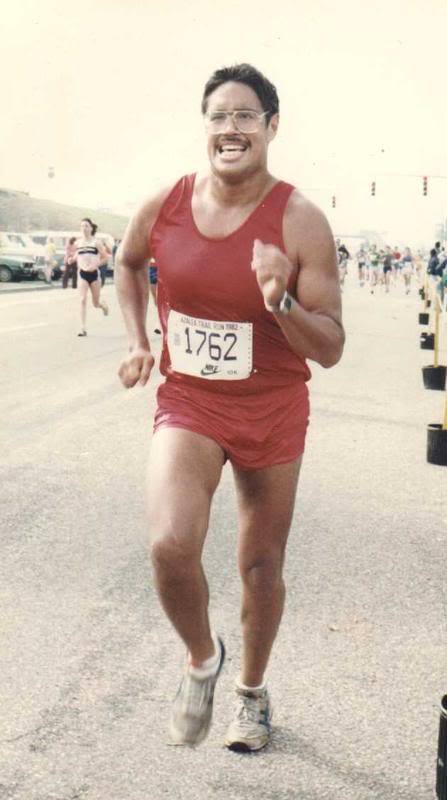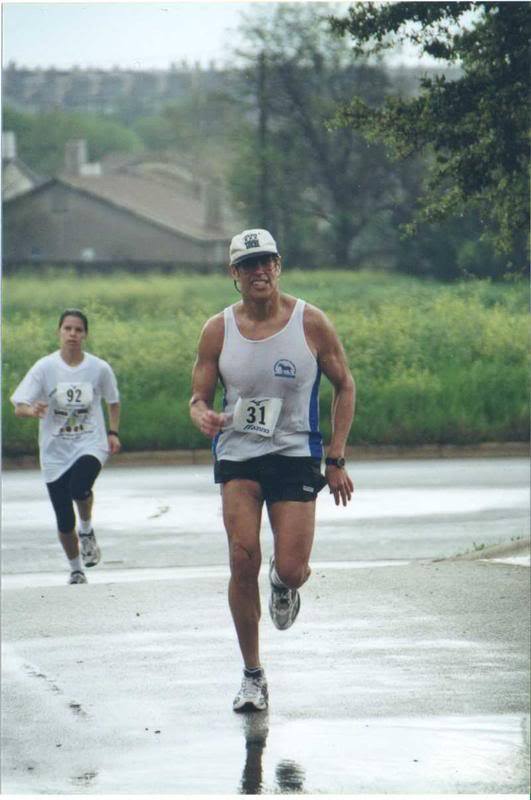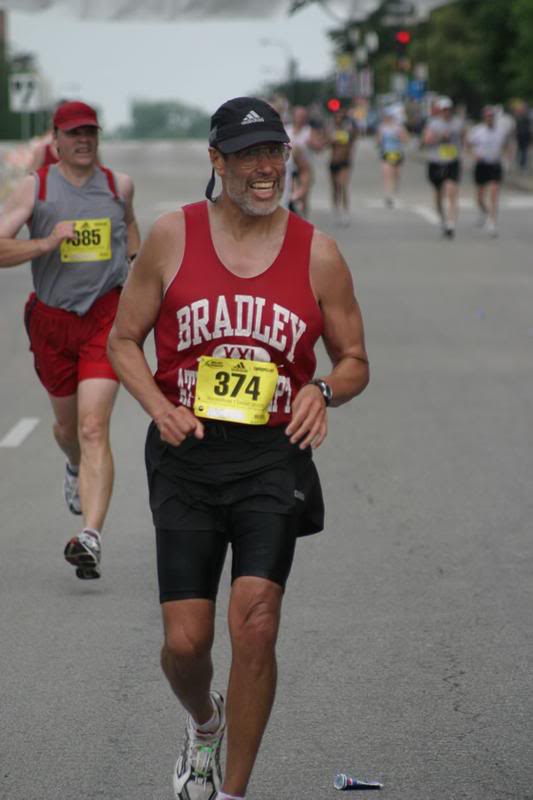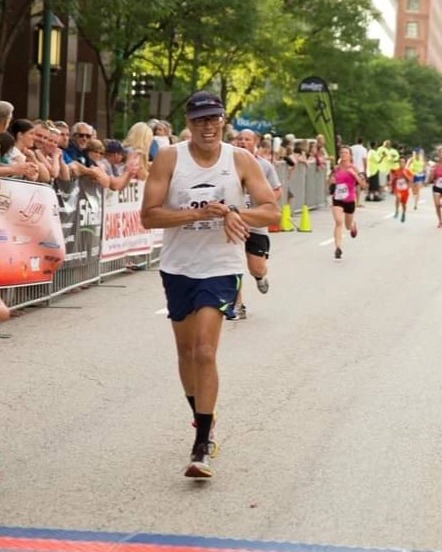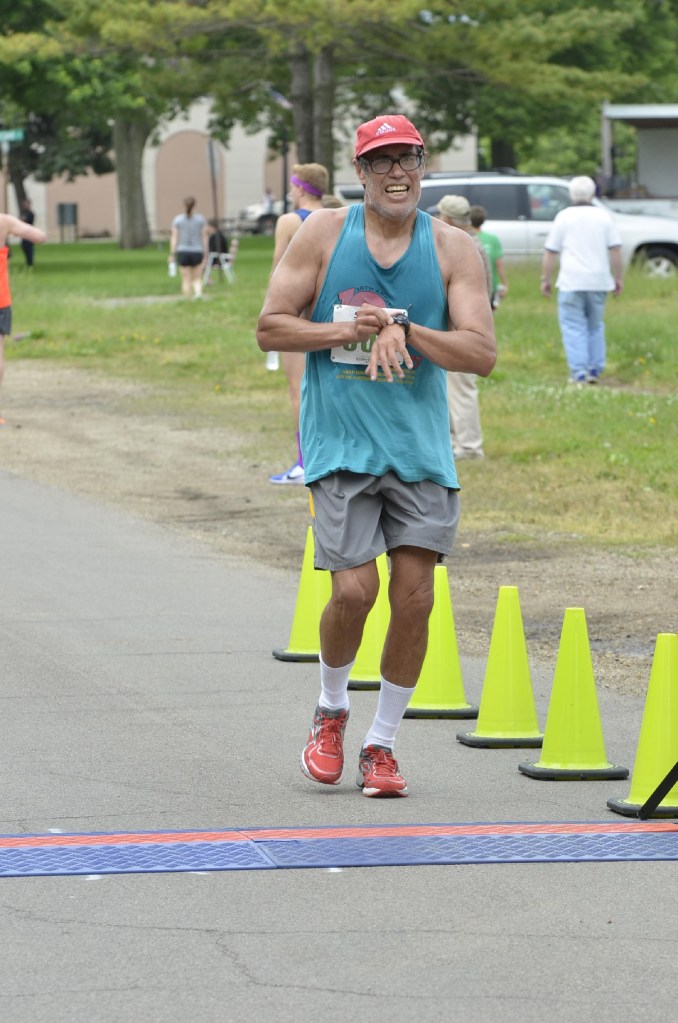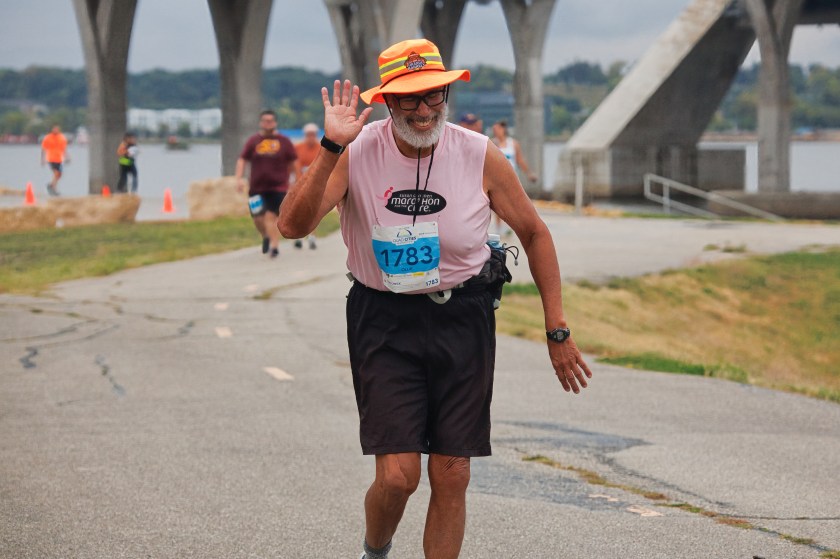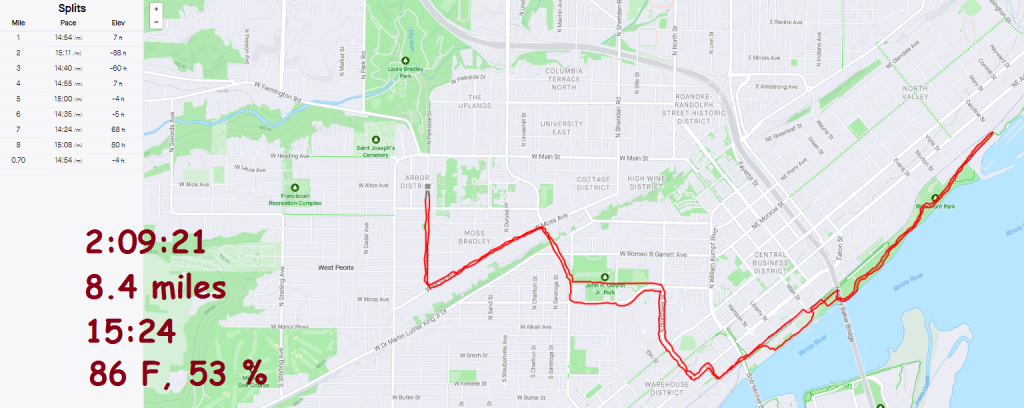It is now Sunday. And I had some flashbacks to the past. And here is the truth:
USC football is not what it was during the John McKay, John Robinson and Pete Carrol days. The colors are the same, the fight song is the same, but the team is not.
I am not what I once was; my lifetime PBs for the half marathon are 1:34 as a runner and 2:17 as a walker. And for a period in my life, 2:20-2:40 was an all but guaranteed result as a walker. Those days are over. Completely.
Nevertheless, I had a lot of fun this weekend.
Saturday: Harry was my “date” for the USC game.


Note where they put the USC band.
The parachute team was spectacular.
Oh, the game: it was an interesting one. USC got the ball, promptly marched it into Illini territory and fumbled it away. The Illini drove it for a touchdown; the Illini offense was to rack up 500 yards of offense today. The Trojans promptly tied it with a march of their own; the teams were to punt one time apiece. The Illini retaliated 14-7 and, after a 4’th down stop, were threatening to make it 21-7, when the Trojans got a controversial fumble recovery. Then they marched it down to make it 14-10 at the half.
Second half: Illini got a field goal, and interception and then hit a swing pass to go up 24-10. No problem: USC drove it again to make it 24-17. The Illini got yet another touchdown to make it 31-17, which was the score going into the 4’th. The Trojans: once again, they used their excellent receivers to score and hit a 2 point conversion to make it 31-25.
Now it was the Illini’s turn, but they fumbled going into the Trojan end zone. This would have iced the game. Instead, the Trojans took the lead on a nifty pass and were up 32-31 with about 2 minutes to go.
That was too much time: the Illini promptly drove it to field goal range and their excellent kicker nailed it from 41 yards as time expired.
What a game! What a bounce back performance from the Illini after last week’s massacre at Indiana.
Yes, the Illini defense got shredded; that will be an ongoing problem.
Sunday
I drove to Quad Cities last night and stayed 4 miles away. I was to do the half marathon. The morning started at 59 F and was to get warmer, but the half marathon course managed to feature quite a bit of shade. That helped.

The result: 3:01:27, which was 2 minutes faster than last year. What cost me sub 3 hours: not enough training miles AND being around 200 lb. That is too heavy: I should be in the mid to high 180’s
I got into rhythm early and mostly ignored my watch. With the exception of that LOOOOONG pedestrian bridge next to I 74, I mostly maintained high 13s. The course was very intelligently designed; mile 2 was on the bridge and the marathoners reached it later, hence it never got crowded. I was treated to seeing the faster marathon runners.
Yes, at my walking pace, I was mostly the old, lame (I had knee braces) and heavier than optimal (see my remarks about my being too heavy). But, I am grateful for the longer time limits and for the opportunity to walk the course.
I admit that I teared up before the start; I wonder how much longer I’ll be able to do these. But I smiled at the finish; even though I did not have the reserves to take the final 1.1 miles fast. I was mildly surprised that I beat my last year’s time .
What I did right: 18 ten mile walks over the previous 20 weeks, heat conditioning. I also had a good attitude: “just walk; don’t be a slave to the watch.” And orange juice at mile 5 helped: I never got sick.
What I did wrong: too heavy, not enough training miles, and my 5k walk is too slow.
splits: 13:39, 14:22, 13:23, 13:42, 13:57 (1:09:05)
14:12, 13:47, 13:44, 27;33 (2 mile) 2:18:22
13:19, 13:49, 15:58 (14:30 pace)
My half marathon walks: (no running at all in any of these) Note: most links are broken.
September 2003: 2:17 (Appleton Fox-Cities powerwalk division)
January 2008: Austin 30K 3:50:56 (about 2:40 for the half marathon split)
September 2008: 2:25:13 Quad Cities
September 2010: 2:39:13 Quad Cities (surgery that summer)
September 2011: 2:40:53 IVS
September 2011: 2:22 Quad Cities
January 2012: 2:34 First Light
June 2012: 2:30:18 Galesburg
September 2012: 2:24:46 IVS
April 2014: 2:25:26 Peoria Heights
May 2014: 2:19:15 Peoria
September 2014 2:35 (IVS)
September 2014 2:24:17 Quad Cities
September 2015 2:38:13 IVS
June 2017: 2:47:24 Galesburg
July 2017 2:42:19 Chicago RR
August 2017 Mahomet Half marathon 2:52:33
October 2018 Whisky Daddle Half Marathon 2:29:23
August 2024: Mahomet Half Marathon 3:05:09.
September 2024: Quad Cities Half Marathon 3:03:37
September 2025: Quad Cities Half Marathon 3:01:27
Quad Cities History
1998: 3:55 as a runner (hot)
1999: 3:45 as a runner
2000: 1:40 for half of a relay
2001: 1:49 for half marathon (week after giving blood)
2002: 4:44 marathon as a walker
2004: 5:12 marathon as a walker
2005: 5:34 marathon as a walker.
2007: DNF at mile 23 (walker)
2008: 2:25 half marathon (walker)
2009: 5:28 marathon (as a walker)
2010: 2:39 half marathon (as a walker; knee surgery in July).
2011: 2:22:27 (half marathon powerwalk)
2013: 2:20:59 as a runner
2014: 2:24:17 powerwalk.
2016 DNF mile 20 (run/walk) heat
2017 DNF mile 20 (walk) heat
2018: Marathon powerwalk 6:14:11.
2019: Marathon powerwalk 6:42:06
2020: virtual 1/2 3:33:50
2024 Half Marathon walk 3:03:37
2025 Half Marathon walk 3:01:27





